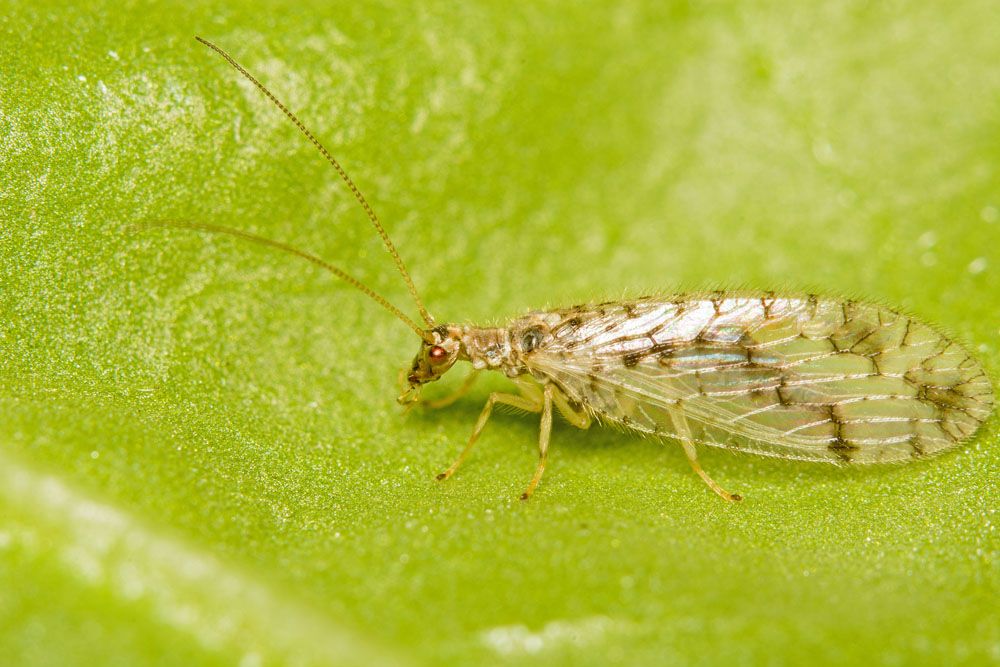
Brown Lacewings – Hemerobiidae
Brown Lacewings
Family: Hemerobiidae
Common Name: Brown Lacewings
Appearance: Brown lacewings are 5-10 mm long insects having a yellow, brown, or greyish brown body. They have 2 pairs of large thin net-like membranous wings that cover the abdomen like a roof. Wings are also light brownish in color. They have long thick brown antennae and well-developed chewing mouthparts.
Host Plants or Food: Whiteflies, Psyllids, Caterpillars, Lace bugs, Aphids, Mites, Mealybugs, Leafhoppers, Scales, Thrips.
Territory: 58 species of brown lacewings are found in Northern America, specifically in Northern Florida and California (5 genera and 31 species are found in California).
Mode of Damage: Beneficial Garden Insect
Habits and Life History:
- Brown lacewings mostly live in crop fields, gardens, shrubs, tree crops, landscape, coastal areas in California, and natural places.
- They are mostly seen when a plant is disturbed on which they are present and attracted to light.
- Brown lacewings undergo four life stages, starting from egg to larva to pupa and finally developing into an adult.
- Eggs are laid singly on the underside of the leaves and twigs near the prey.
- Larvae come out from the eggs after hatching, develop through three instars, and then undergo pupation. Larvae are also brown in color, having slender worm-like bodies.
- Pupation occurs under loose barks or plant surfaces
- They spend their winter mostly as inactive larvae.
